Throughout history, artists have sought to capture the raw essence of desire, passion, and sensuality through their brushstrokes, creating provocative and captivating works that push the boundaries of societal norms. From classical masterpieces to modern interpretations, these paintings celebrate the beauty and complexity of human s*xuality, showcasing the power of art to evoke both arousal and contemplation. In this article. We will explore the intersection of art and human s*xuality with a list of the top 10 s*xual paintings of all time.
Rokeby Venus

Artist: Diego Velázquez
Year: 1651
The Rokeby Venus, a painting by Diego Velázquez, stands as a masterpiece of the Spanish Golden Age. Created between 1647 and 1651, during Velázquez’s visit to Italy, the artwork portrays the goddess Venus in a seductive posture, reclining on a bed and peering into a mirror held by her son Cupid, the Roman god of physical love. The painting is housed in the National Gallery in London. Velázquez drew inspiration from a range of sources, spanning from ancient to baroque art.
In this composition, Velázquez skillfully merges two established poses for Venus: the reclining position on a couch or bed, and the contemplative gaze at a mirror. Although it appears as if she is admiring her own reflection, an intriguing effect
Rolla
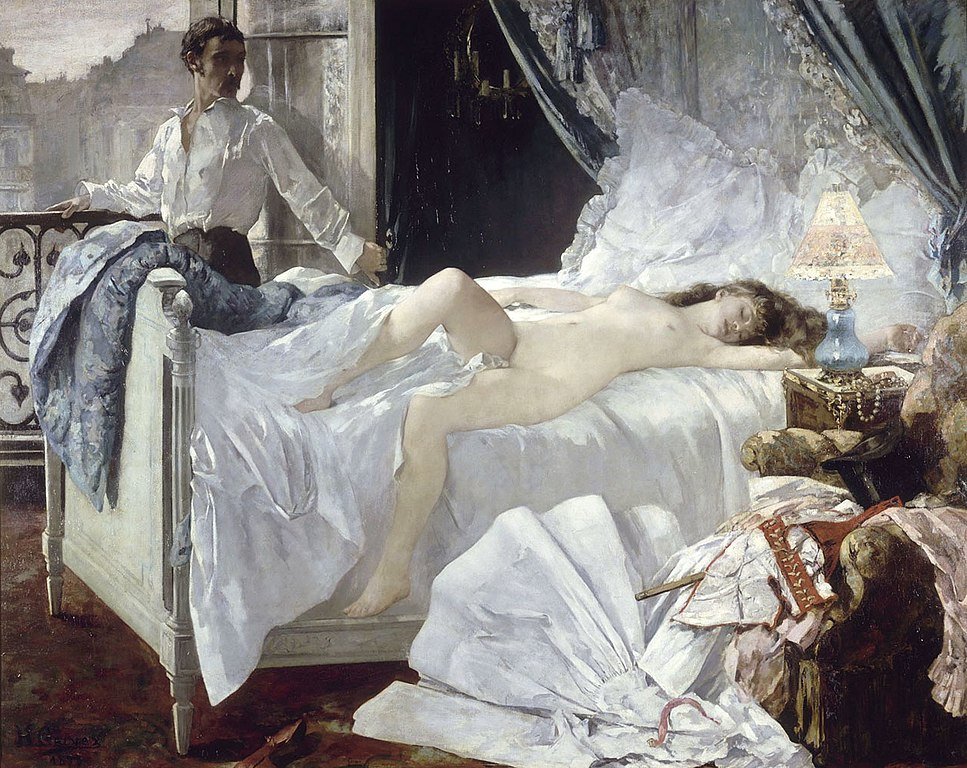
Artist: Henri Gervex
Year: 1878
In 1878, Henri Gervex’s painting “Rolla” faced exclusion from the Salon due to its deemed immorality, despite Gervex’s previous accolades. Inspired by Alfred de Musset’s poem, the artwork portrays Jacques Rolla, a young bourgeois contemplating suicide while observing Marie, a teenage prostitute. The scene’s controversy stemmed from the arrangement of clothing, signifying Marie’s consent and profession, rather than her nudity, which was commonplace.
Gervex may have heeded advice from Degas to include suggestive elements like a fallen corset. Following its exclusion, “Rolla” was exhibited in a Parisian gallery for three months, attracting large crowds and generating widespread scandal covered by newspapers. In later interviews, Gervex expressed pleasure at the public’s response, leaving uncertain whether he deliberately provoked the authorities or anticipated the ensuing controversy.
In Bed, the Kiss
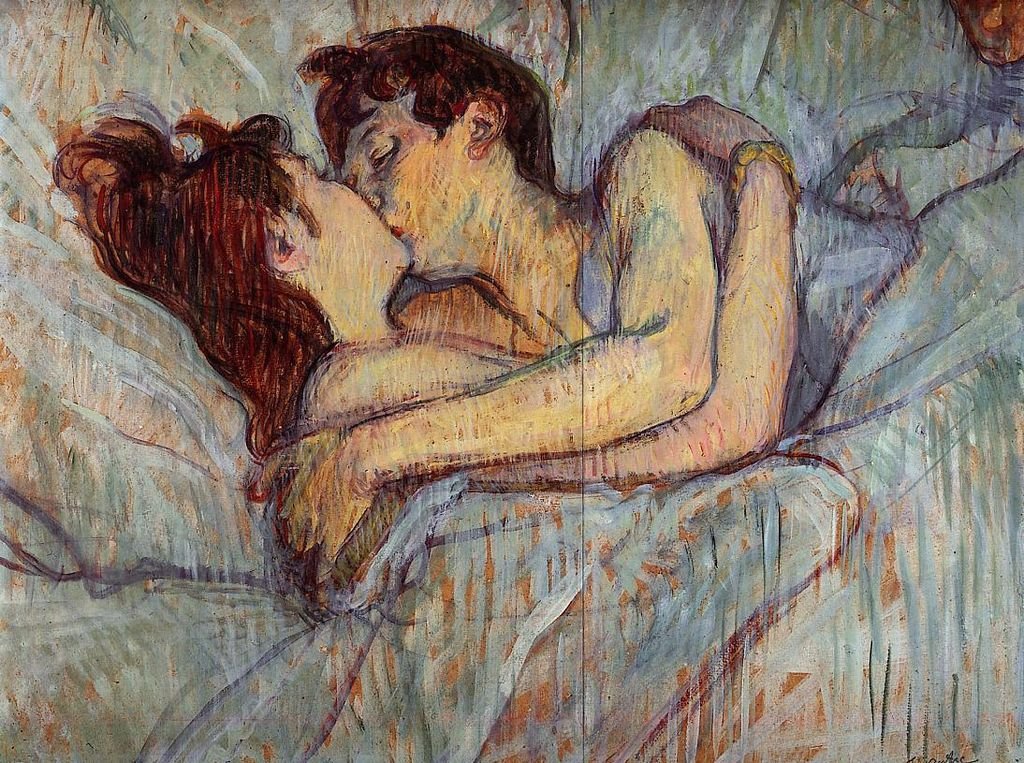
Artist: Henri de Toulouse-Lautrec
Year: 1892
This captivating artwork from 1892, titled “In Bed: The Kiss,” created by Toulouse-Lautrec, depicts a passionate moment between two women. The artist himself views this painting as the embodiment of pleasure and sensual delight. Toulouse-Lautrec’s brilliant choice of colors, incorporating vibrant red and yellow tones subdued by hints of grey, green, and blue, enhances the overall composition.
In this enchanting masterpiece, the artist skillfully conveys the tender love shared by the couple, capturing their fear of separation. Toulouse-Lautrec’s portrayal of two women in bed is intimate, honest, and devoid of the societal prejudices associated with his era. Having lived among and frequently depicted prostitutes, dancers, and artists’ models in Montmartre, the artist’s pastels vividly capture the authentic lives of his female friends, showcasing his true mastery. Love is depicted as effortless and liberating in this mesmerizing artwork.
En Sommerdag
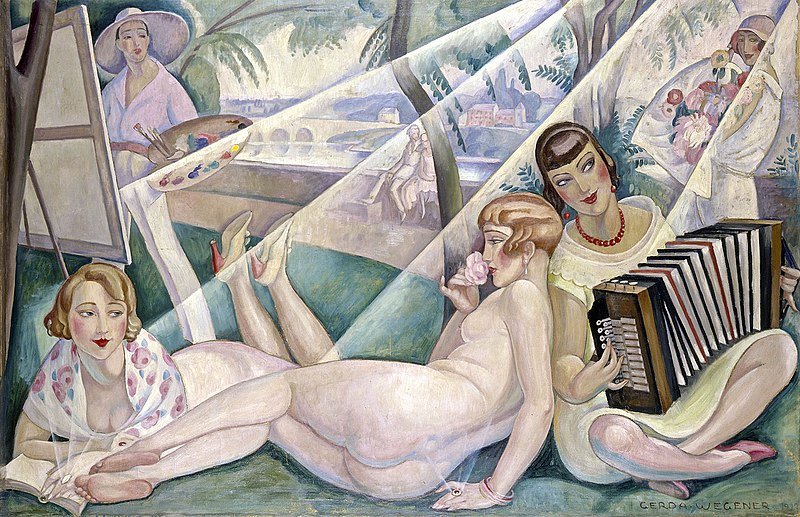
Artist: Gerda Wegener
Year: 1927
“En Sommerdag” by Gerda Wegener is a widely acclaimed painting featuring three women. Gerda Wegener was a renowned Art Nouveau artist of the early 20th century, famous for her works known to have an explicit and erotic quality that inspired a whole new genre. She was married to Lili Elbe, who made history as one of the earliest documented individuals to undergo s*x reassignment surgery.
In addition to her successful career as a fashion illustrator for renowned magazines like Vogue, Gerda Wegener also delved into the realm of painting, often exploring erotic depictions of women. Her marriage to fellow artist Einar Wegener, who later transitioned into Lili Elbe, contributes to the compelling narrative surrounding her artistic journey. “En Sommerdag” stands as a testament to Wegener’s artistic talent and the significant personal and historical context that influenced her life and work.
Sussana and the Elders
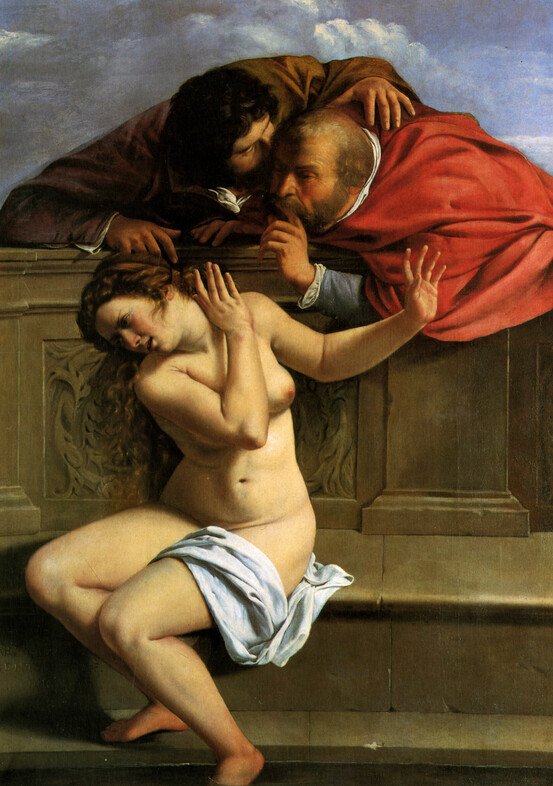
Artist: Artemisia Gentileschi
Year: 1610
“Susanna and the Elders” is a significant painting created in 1610 by Artemisia Gentileschi, an esteemed Italian Baroque artist. It stands as her earliest-known work that bears her signature and date. Currently residing in the Schloss Weißenstein collection in Pommersfelden, Germany, this artwork portrays an uneasy Susanna immersed in a bath, while two lurking men cast a shadow over her. During the Baroque period, depicting this scene was a popular artistic choice.
The inspiration for this painting derives from the deuterocanonical Book of Susanna in the Additions to Daniel. Gentileschi, renowned for her mastery, considered “Susanna and the Elders” to be one of her signature pieces, creating various renditions of the subject at the outset of her career. The painting holds immense historical and artistic significance, showcasing Gentileschi’s skill and distinctive style.
Venus of Urbino
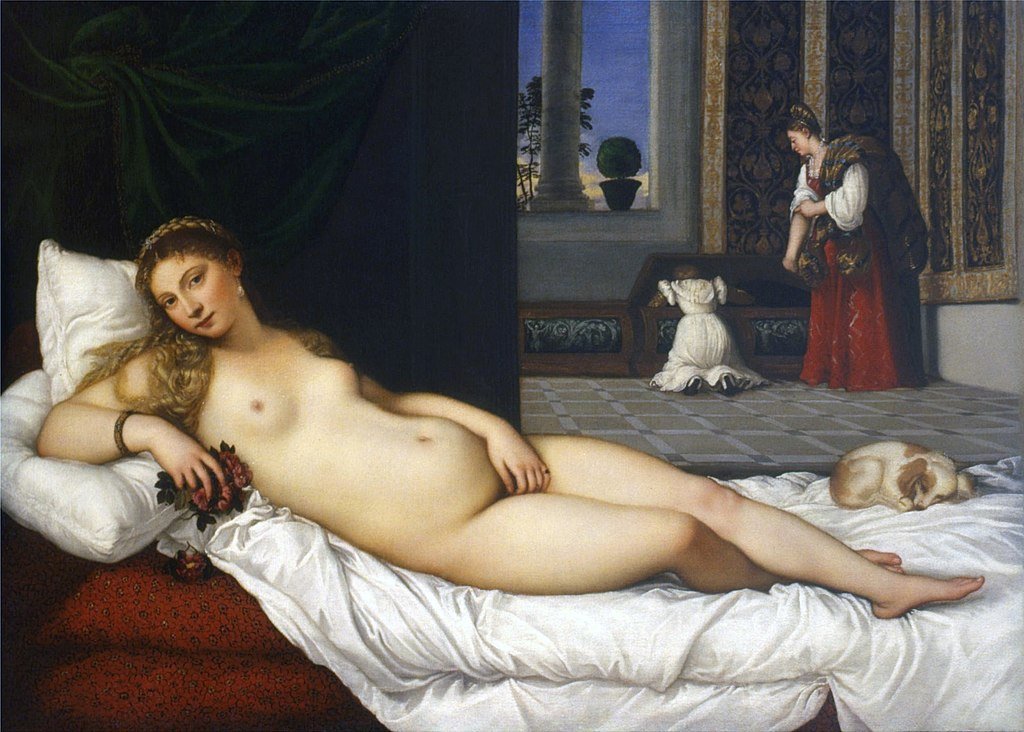
Artist: Titan
Year: 1534
“The Venus of Urbino,” also referred to as the Reclining Venus, is an exquisite oil painting by the renowned Italian artist Titian. It is believed to have been initiated in 1532 or 1534 and potentially completed in 1534, although it wasn’t sold until 1538.
This masterpiece portrays a nude young woman, traditionally associated with the goddess Venus, gracefully reclining on a couch or bed within the opulent setting of a Renaissance palace. Today, it can be admired at the Galleria degli Uffizi in Florence.
The pose of the figure is inspired by the Dresden Venus, commonly attributed to Giorgione, but with Titian completing the landscape. In this rendition, Titian has relocated Venus to an indoor environment, engaging her directly with the viewer and emphasizing her sensuality. Some interpretations even suggest that the figure may be depicted engaging in a private moment of self-pleasure.
Olympia
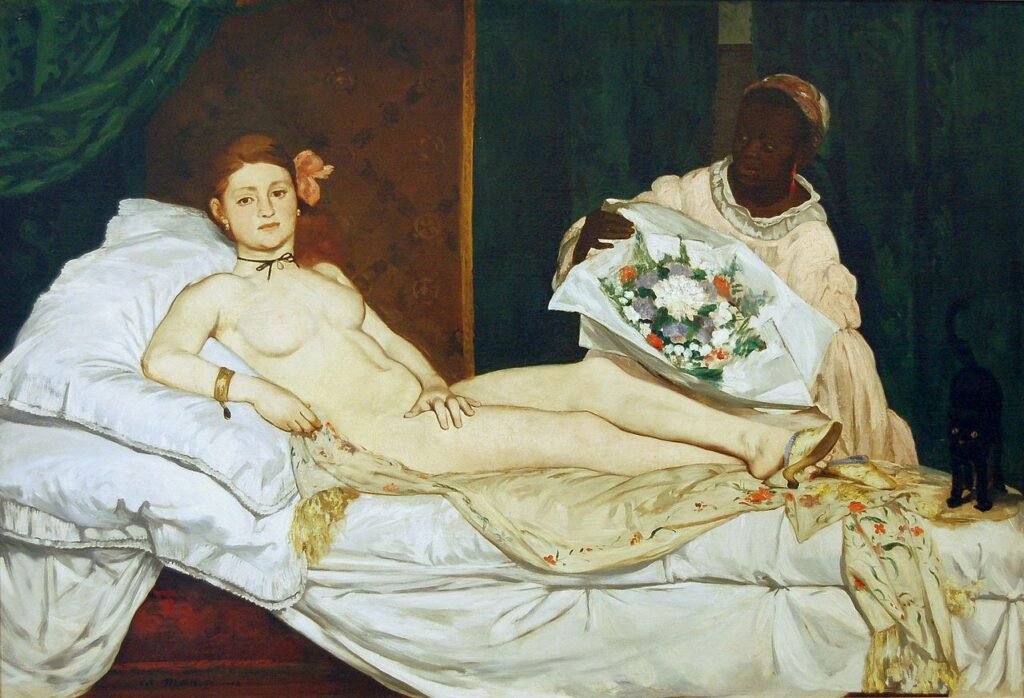
Artist: Édouard Manet
Year: 1863
Olympia, an artwork by Édouard Manet, made its debut at the 1865 Paris Salon. The painting portrays a reclining nude woman, known as Olympia, resting on a bed while being presented with flowers by a servant. The model for Olympia was Victorine Meurent, while the servant was portrayed by the art model Laure.
When the painting was initially exhibited, Olympia’s direct gaze provoked shock and astonishment due to various details that indicated her profession as a prostitute. In 1890, the French government acquired the painting through a public subscription organized by Claude Monet. Today, Olympia is exhibited at the Musée d’Orsay in Paris.
Victorine Meurent, the model for Olympia, was widely recognized by viewers of the painting due to her prominence in Parisian circles. The fact that the model’s identity was well-known was a significant factor that contributed to the painting’s provocative nature. In the eyes of the audience, a well-known contemporary woman in modern-day Paris could not simultaneously represent a historical or mythological figure.
Hylas and the Nymphs
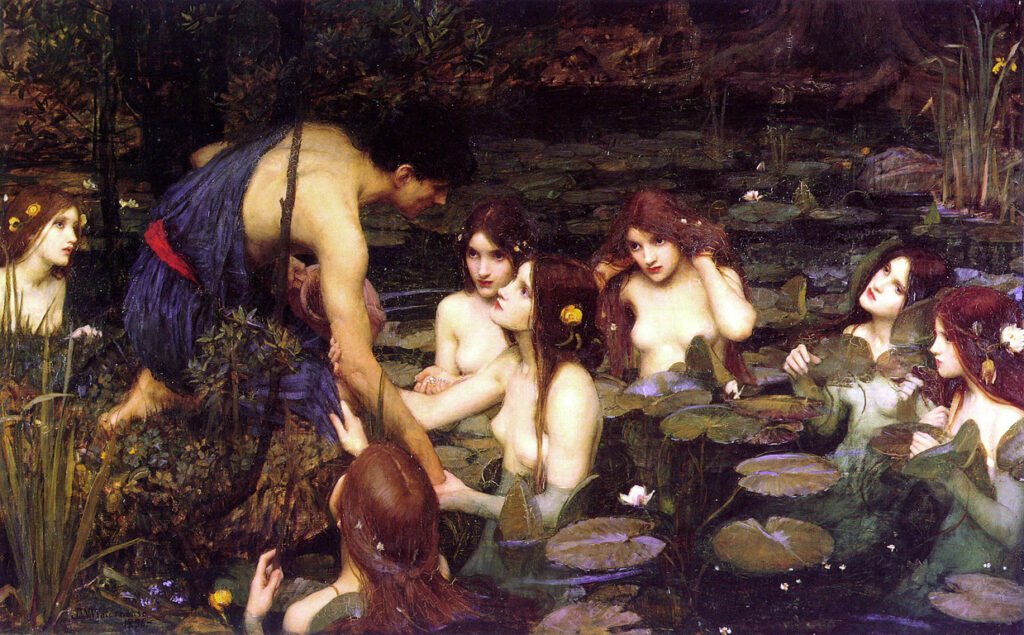
Artist: John William Waterhouse
Year: 1896
In 1896, John William Waterhouse painted “Hylas and the Nymphs,” depicting a scene from the Greek and Roman legend of Hylas. Based on ancient accounts, the painting portrays the tragic youth Hylas being captivated and taken by Naiads, female water nymphs, as he seeks water to drink. The artwork is currently displayed at the Manchester Art Gallery.
The painting showcases Hylas, a young man dressed in classical attire, wearing a blue tunic with a red sash and holding a water jar. He is positioned by a pond surrounded by lush green foliage. Emerging from the pond, among the leaves and Nymphaeaceae flowers, are seven water nymphs. These nymphs, with their luminous alabaster skin, are depicted naked, adorned with yellow and white flowers in their auburn hair. Their physical features are strikingly similar, possibly inspired by just two models.
The Sin
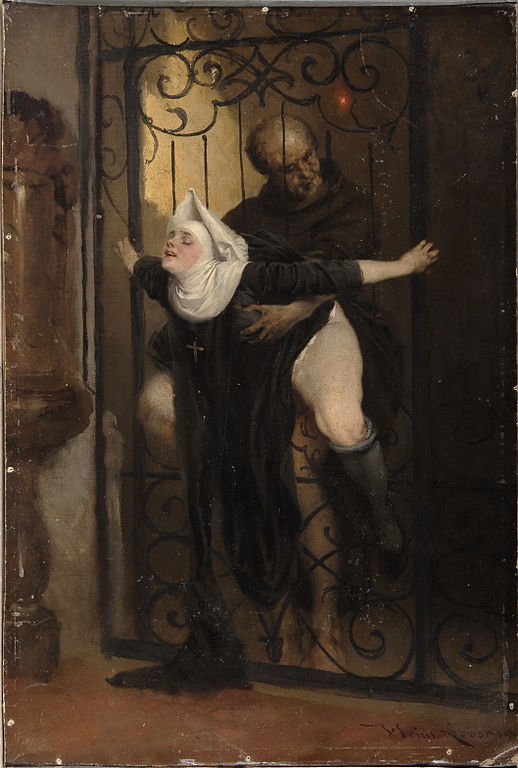
Artist: Heinrich Lossow
Year: 1880
Lossow, a German genre painter, dedicated his spare time to creating erotic artworks. Among his notable pieces is a painting known as, “The Sin” that alludes to the Banquet of Chestnuts, a famous orgy held at the Vatican on October 30, 1501. This extravagant banquet was hosted by Cesare Borgia, a former Cardinal and the son of Pope Alexander VI.
Johann Burchard, the master of ceremonies, documented the event in his diary, describing how naked courtesans moved amidst candelabras, skillfully picking up chestnuts with their mouths. The banquet also included a competition where prizes were awarded to guests who engaged in the most s*xual encounters. As for why Lossow chose to depict this particular scene referencing the orgy rather than focusing on the courtesans and chestnuts, the true reasons remain a mystery.
The Dream of the Fisherman’s Wife
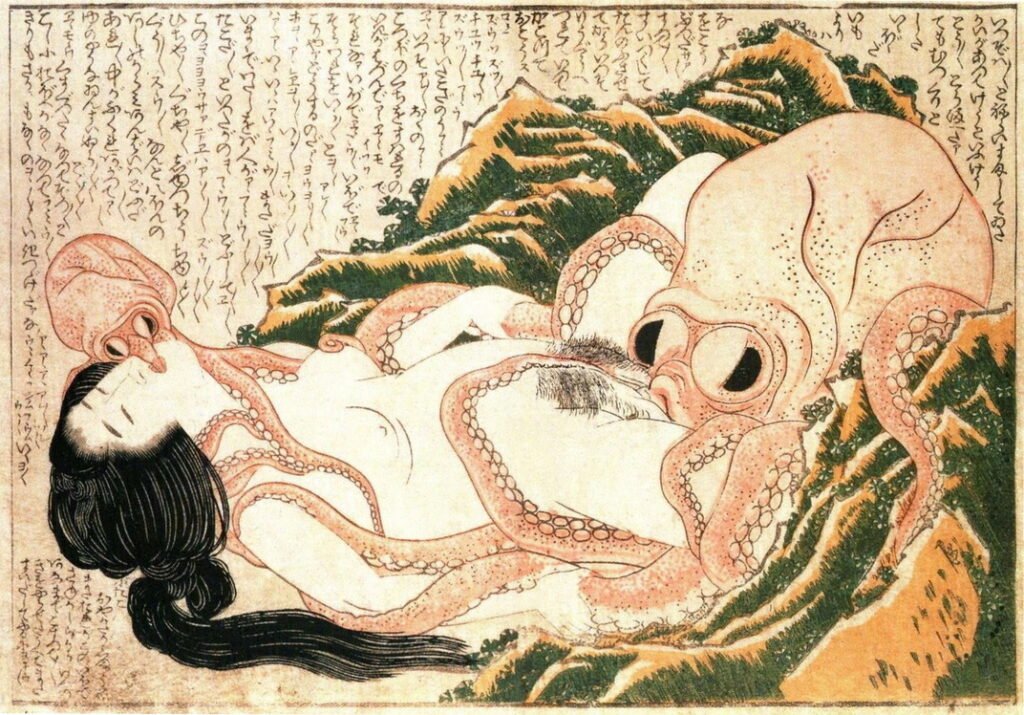
Artist: Katsushika Hokusai
Year: 1814
The Dream of the Fisherman’s Wife is a captivating woodblock-print design crafted by the renowned Japanese artist Hokusai. It graces the pages of Kinoe no Komatsu (‘Young Pines’), a three-volume book of shunga erotica initially published in 1814, and has since become Hokusai’s most celebrated work in this genre. Drawing inspiration from prevalent themes in Japanese art, the artwork portrays a young ama diver engaged in an intimate encounter with a pair of octopuses.
Scholar Danielle Talerico highlights that the image would have evoked the tale of Princess Tamatori in the minds of contemporary viewers, a story that enjoyed great popularity during the Edo period. The Tamatori narrative was a recurring theme in ukiyo-e art, and Utagawa Kuniyoshi, another esteemed artist, created pieces inspired by it, often featuring octopuses among the creatures that the bare-breasted diver skillfully eluded.
The image has frequently been recognized as a precursor to tentacle erotica, a motif that gained popularity in modern Japanese animation and manga from the late 20th century onward, notably popularized by author Toshio Maeda.
